Cambodian Civil War Worksheets
Do you want to save dozens of hours in time? Get your evenings and weekends back? Be able to teach about Cambodian Civil War to your students?
Our worksheet bundle includes a fact file and printable worksheets and student activities. Perfect for both the classroom and homeschooling!
Resource Examples
Click any of the example images below to view a larger version.
Fact File
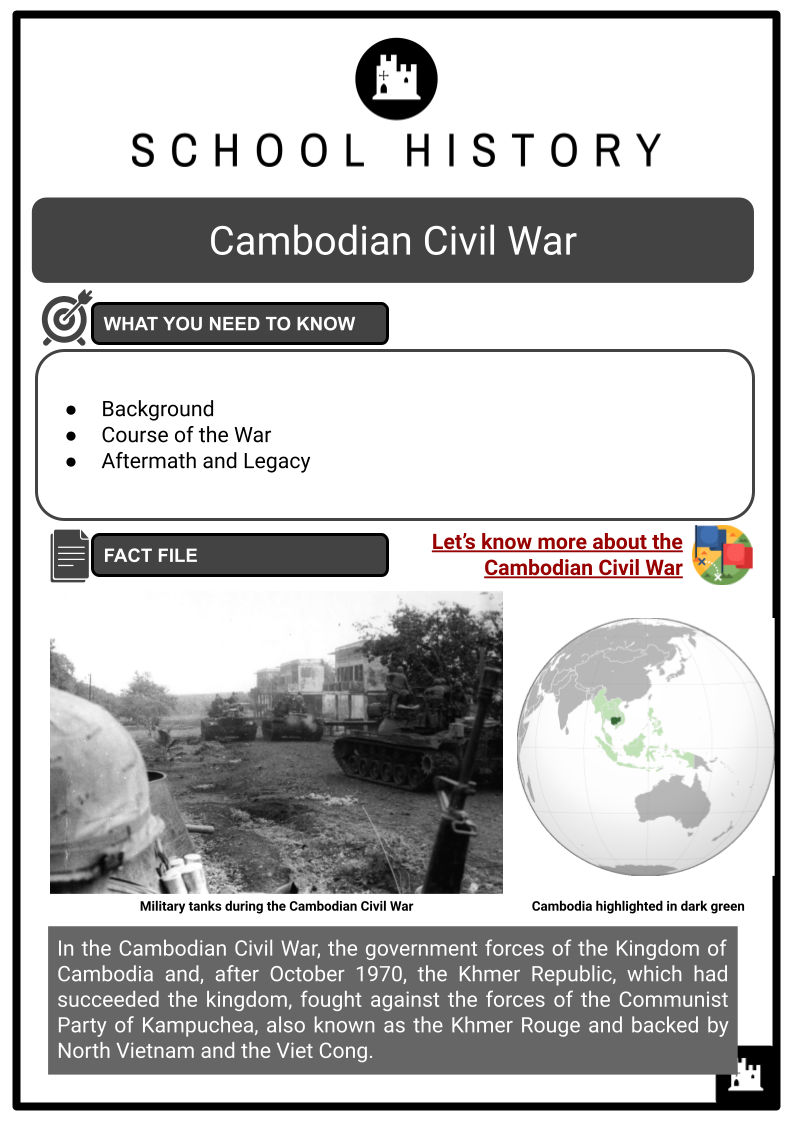
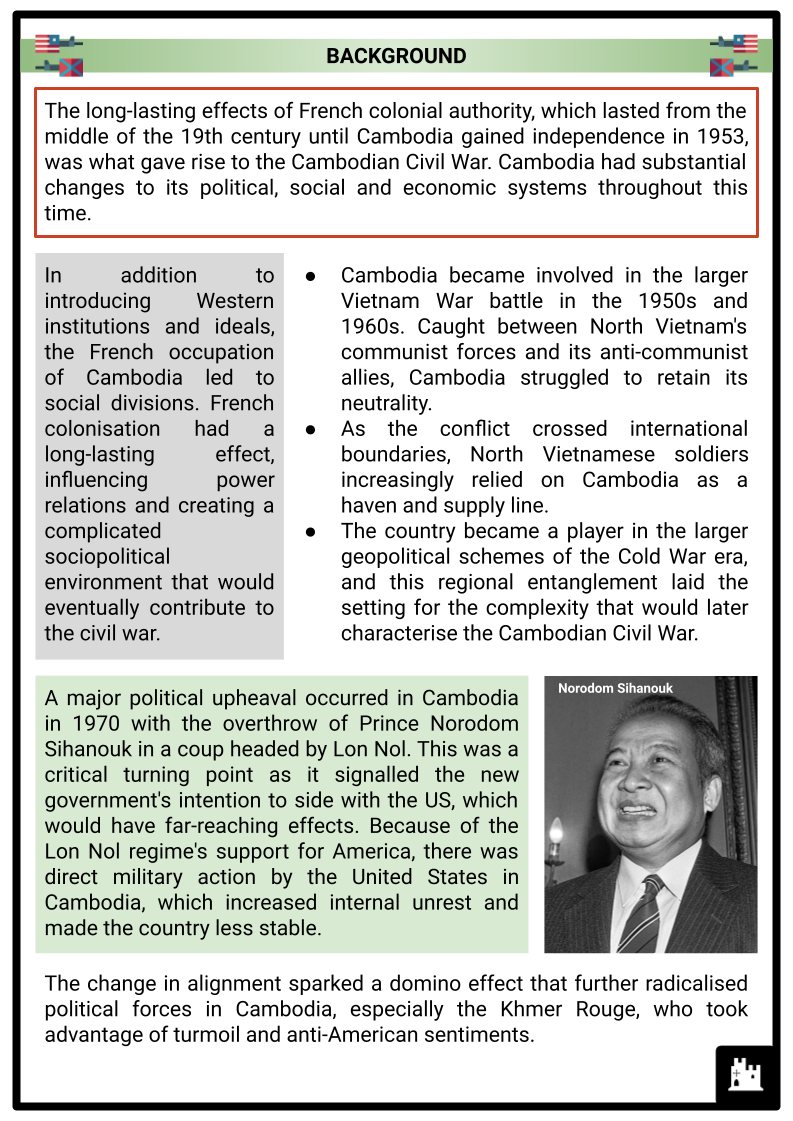
Student Activities
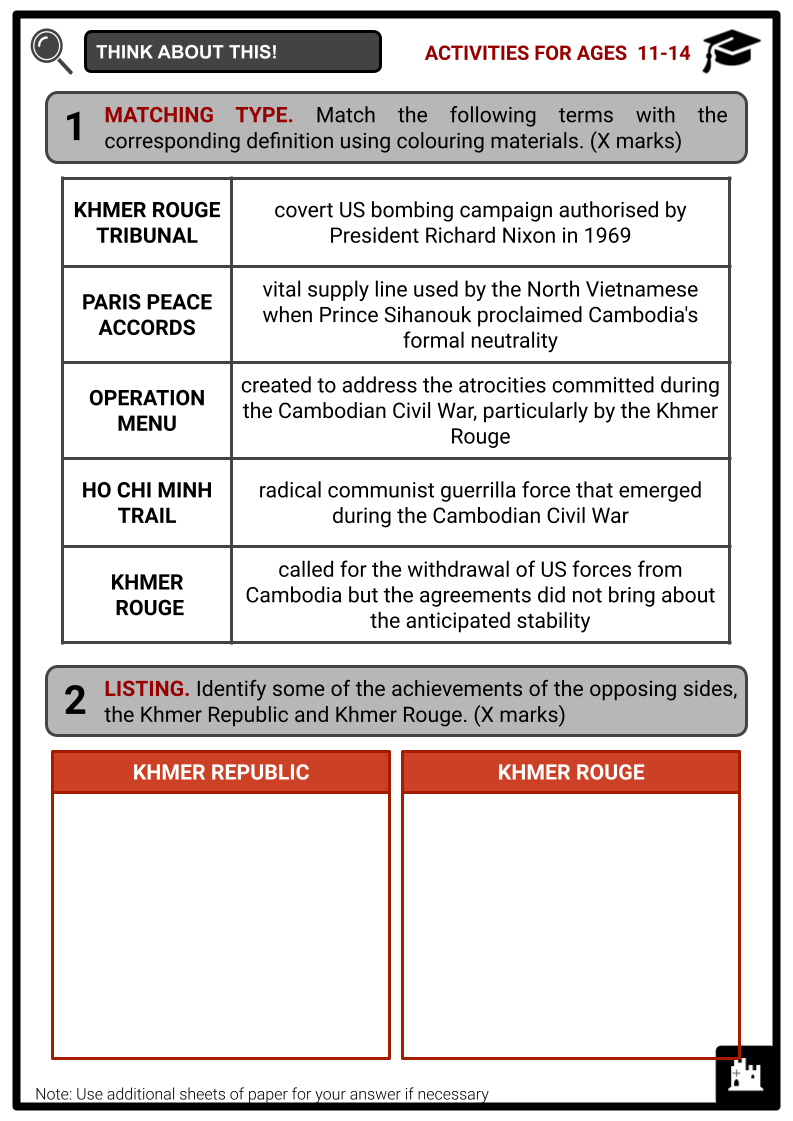
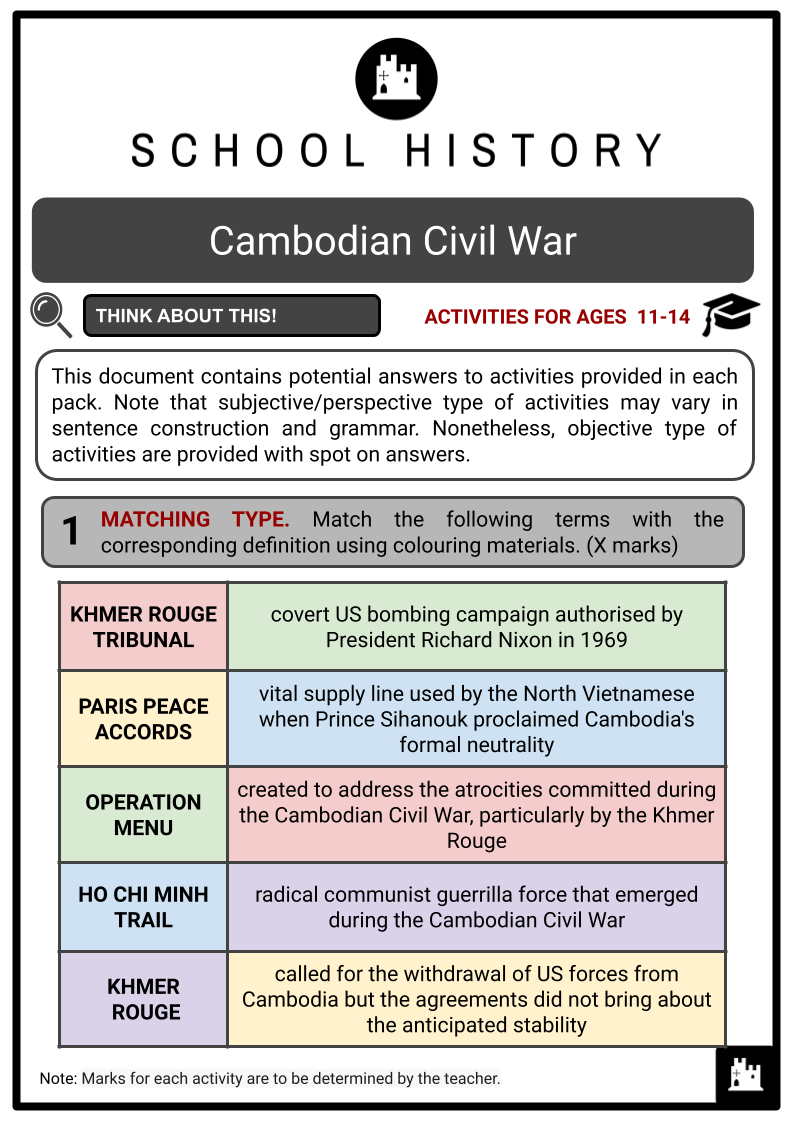
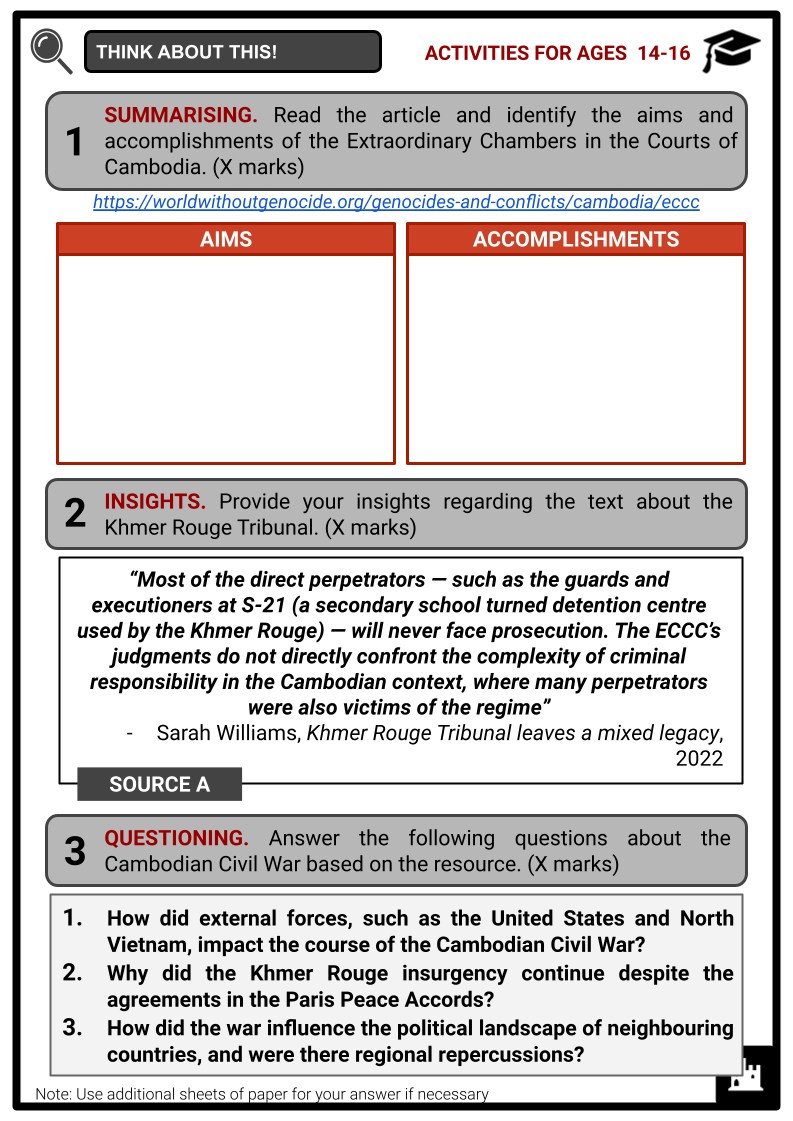
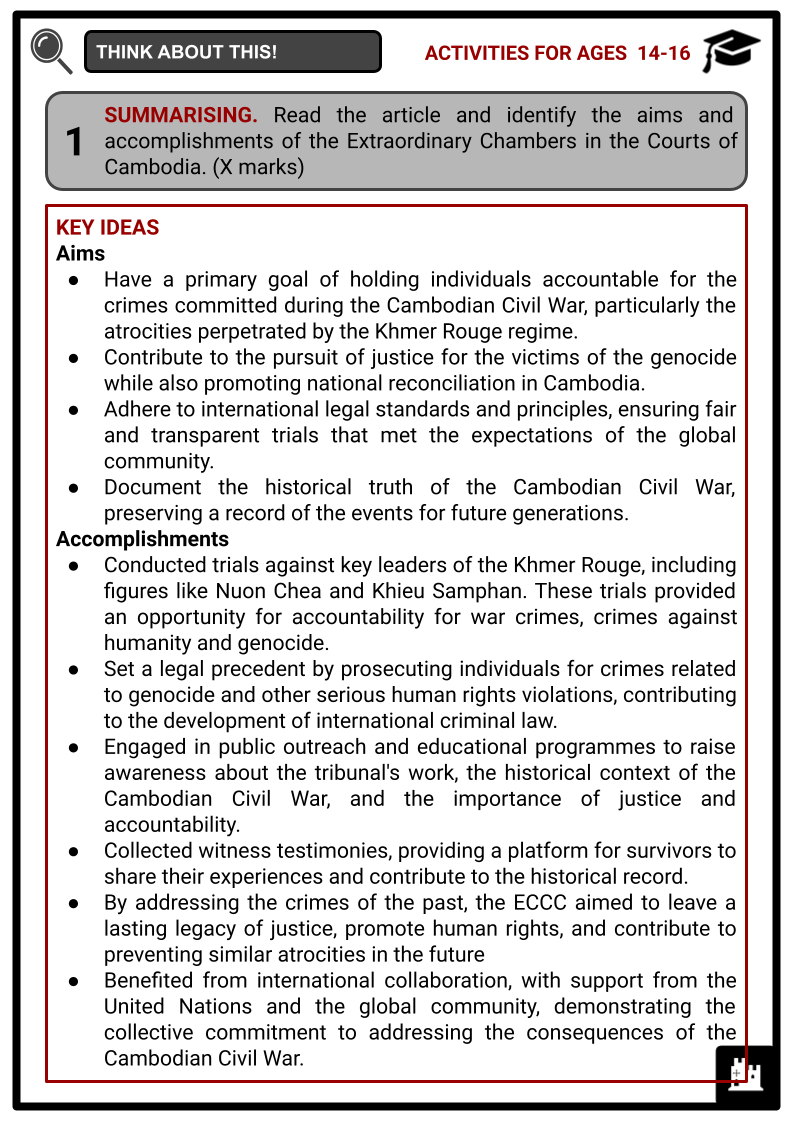
Summary
- Background
- Course of the War
- Aftermath and Legacy
Key Facts And Information
Let’s know more about the Cambodian Civil War!
In the Cambodian Civil War, the government forces of the Kingdom of Cambodia and, after October 1970, the Khmer Republic, which had succeeded the kingdom, fought against the forces of the Communist Party of Kampuchea, also known as the Khmer Rouge and backed by North Vietnam and the Viet Cong.
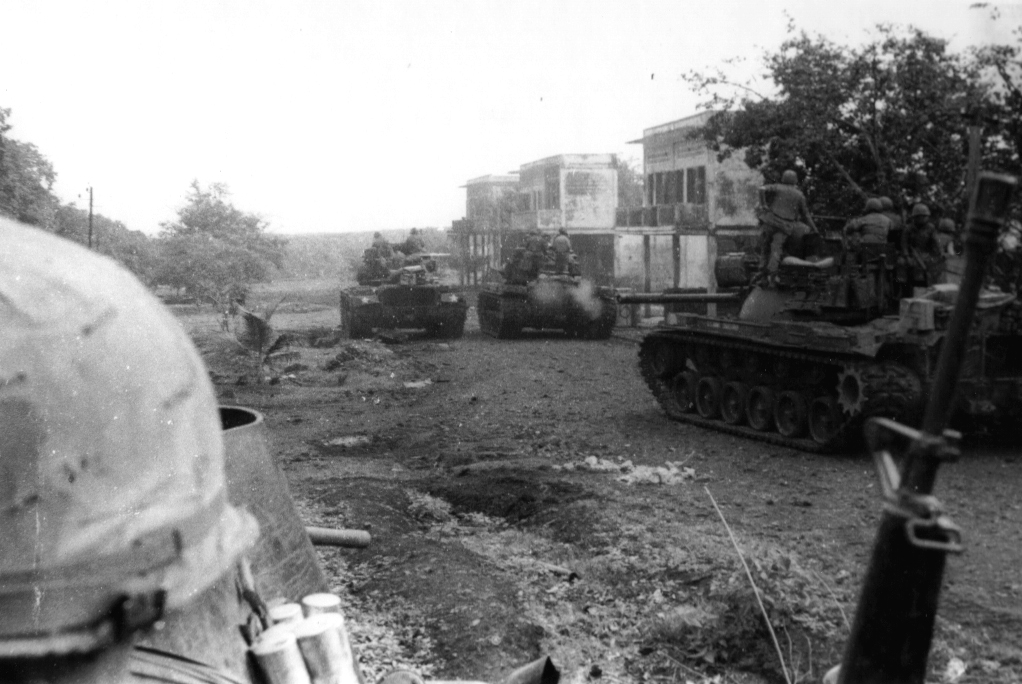
- In the Cambodian Civil War, the government forces of the Kingdom of Cambodia and, after October 1970, the Khmer Republic, which had succeeded the kingdom, fought against the forces of the Communist Party of Kampuchea, also known as the Khmer Rouge and backed by North Vietnam and the Viet Cong.
BACKGROUND
- The long-lasting effects of French colonial authority, which lasted from the middle of the 19th century until Cambodia gained independence in 1953, was what gave rise to the Cambodian Civil War. Cambodia had substantial changes to its political, social and economic systems throughout this time.
- In addition to introducing Western institutions and ideals, the French occupation of Cambodia led to social divisions. French colonisation had a long-lasting effect, influencing power relations and creating a complicated sociopolitical environment that would eventually contribute to the civil war.
- Cambodia became involved in the larger Vietnam War battle in the 1950s and 1960s. Caught between North Vietnam's communist forces and its anti-communist allies, Cambodia struggled to retain its neutrality.
- As the conflict crossed international boundaries, North Vietnamese soldiers increasingly relied on Cambodia as a haven and supply line.
- The country became a player in the larger geopolitical schemes of the Cold War era, and this regional entanglement laid the setting for the complexity that would later characterise the Cambodian Civil War.
- A major political upheaval occurred in Cambodia in 1970 with the overthrow of Prince Norodom Sihanouk in a coup headed by Lon Nol. This was a critical turning point as it signalled the new government's intention to side with the US, which would have far-reaching effects. Because of the Lon Nol regime's support for America, there was direct military action by the United States in Cambodia, which increased internal unrest and made the country less stable.
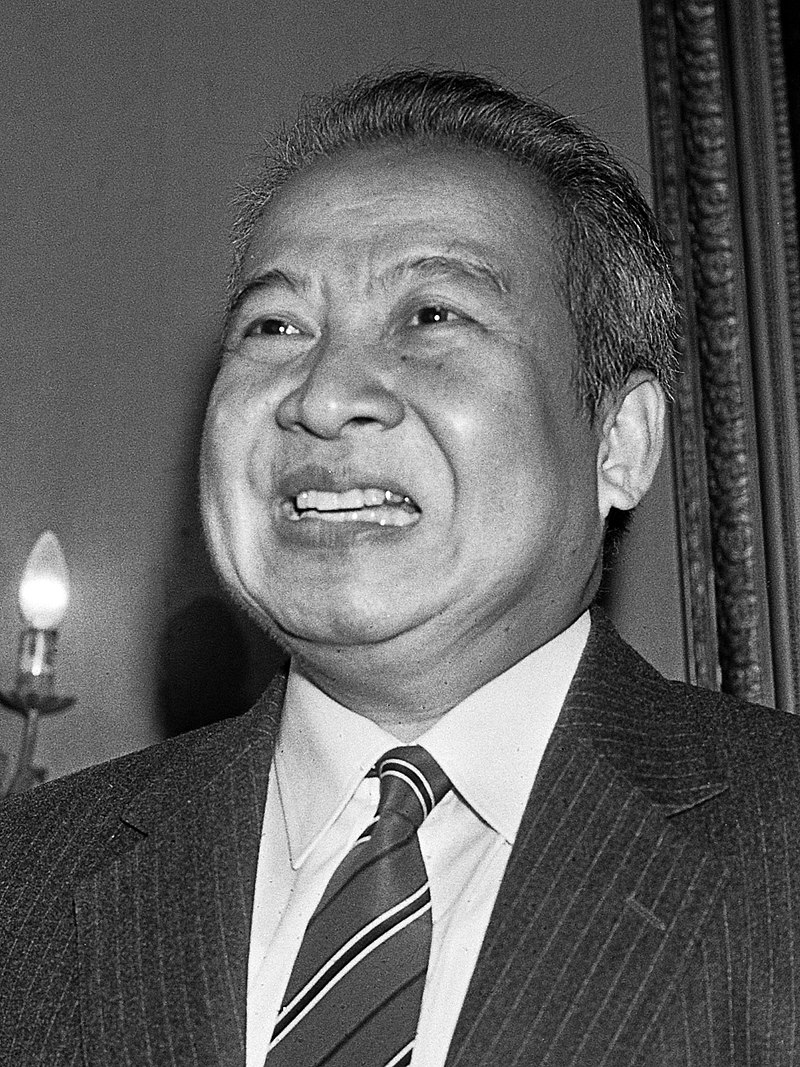
- The change in alignment sparked a domino effect that further radicalised political forces in Cambodia, especially the Khmer Rouge, who took advantage of turmoil and anti-American sentiments.
- Internal power conflicts worsened as Cambodia got closer to the United States. Diverse groups, each fighting for power and influence, opposed the Lon Nol administration. Driven by an ideological spirit based on extreme communism, the Khmer Rouge developed as a strong force amid this turbulent environment.
- Parts of the general population fed by sentiments against America and disillusionment with the political establishment gave rise to the movement. This internal radicalism created the conditions for the bloody, long-lasting battle that would be the Cambodian Civil War.
COURSE OF THE WAR
- During the Vietnam War, Cambodia's complicated geopolitical situation shaped the early stages of the country's civil war. The Ho Chi Minh Trail, a vital supply line, was used by the North Vietnamese when Prince Norodom Sihanouk proclaimed Cambodia's formal neutrality. As a result, American apprehension about North Vietnamese soldiers exploiting Cambodia grew, and President Richard Nixon decided to approve Operation Menu in 1969.
- The public and the international world were kept in the dark about the clandestine bombing operation, which was designed to target North Vietnamese sanctuaries within Cambodia. The disastrous effects of Operation Menu, which continued until 1973, resulted in a great deal of collateral damage and fuelled the radicalisation of political forces in Cambodia. The airstrikes not only failed to cut off North Vietnamese supplies, but they also caused Cambodia to become unstable, indicating that the situation would only become worse.
- Nevertheless, the United States' increased engagement was not limited to airstrikes. When Prince Norodom Sihanouk was overthrown in a revolution led by Lon Nol in 1970, Cambodia saw a profound political upheaval. Fears of North Vietnamese influence and assistance for the Khmer Rouge insurgency were the driving forces for the coup.
- Following Lon Nol's ascent to power, Cambodia changed its posture and turned to the US for military support in fending off the perceived communist threat. In response, the United States deployed ground forces, launched operations against the Khmer Rouge and North Vietnamese forces, and gave significant military and financial support. Although the goal of this intervention was to stop the growth of communism, it unintentionally made polarisation and internal conflict worse in Cambodian society.
- The fallout from Lon Nol's 1970 coup had a lasting effect on Cambodia, laying the groundwork for greater American military engagement. The Khmer Rouge insurgency and internal resistance made it difficult for the Lon Nol administration to stay in power. The unintended result of the US military assistance given to Lon Nol in the war against communism was the increasing radicalisation of certain segments of Cambodian society, especially in rural regions.
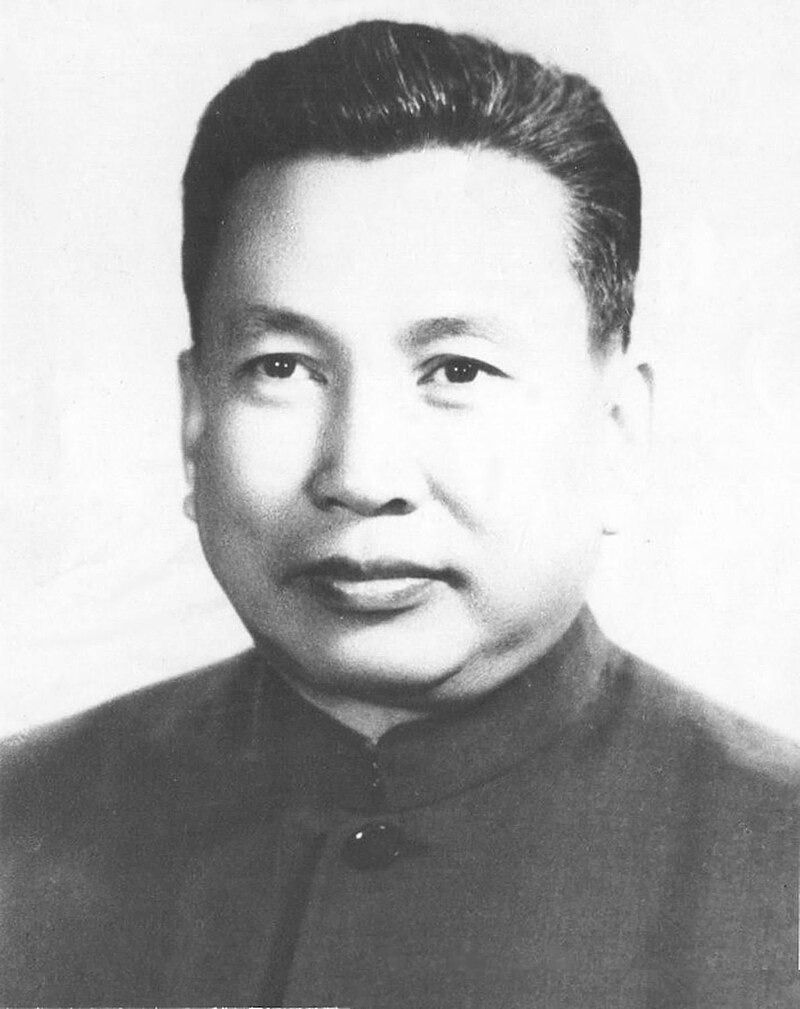
- Pol Pot's communist guerrilla group, the Khmer Rouge, took advantage of the dissatisfaction with the Lon Nol administration and anti-American feelings. The Lon Nol regime's calculated errors combined with the unexpected outcomes of US military action left a power vacuum that gave the Khmer Rouge the opportunity to gain further ground.
- The humanitarian catastrophe in Cambodia grew worse as a result of the ongoing US military operations. Rural residents were killed, displaced, and faced economic hardship as a result of being caught in the crossfire of battle. The bombings and military actions inflamed anti-American feelings among the general public, adding to the Khmer Rouge's appeal as a counter-force to perceived foreign aggression. Political unrest and a rise in violence during this time created the conditions for the Khmer Rouge's ultimate rise to power.
- The Paris Peace Accords of 1973 demanded that American soldiers leave Cambodia, but the Khmer Rouge insurgency continued and even became stronger. Because the agreements did not result in the anticipated stability, the Khmer Rouge's guerilla methods helped them seize more territory in the countryside.
- Weakened and confronting internal dissension, the Lon Nol administration was unable to successfully oppose the Khmer Rouge. By 1975, the Khmer Rouge had begun their last push, taking advantage of the political void to their advantage. With the Khmer Rouge's spectacular and quick triumph in April of that year, the Cambodian Civil War came to an official end.
AFTERMATH AND LEGACY
- There were both short-term and long-term effects of the Cambodian Civil War aftermath that were significant and long-lasting for the country. After the Khmer Rouge government was overthrown in 1979, Vietnam occupied Cambodia while it underwent a period of rehabilitation and reconstruction.
- The nation was left with severe wounds from the battle, including the enormous task of reconstructing infrastructure, reuniting a fractured population, and treating the trauma caused by years of atrocities and bloodshed. During this turbulent time, the United Nations and other humanitarian organisations were instrumental in giving relief and support.
- One of the most important aftereffects of the Cambodian Civil War was the genocide carried out in Cambodia by the Khmer Rouge between 1975 and 1979. An estimated 1.7 million Cambodians perished as a result of the regime's harsh policies, which included famine, forced labour and execution.
- Mass graves known as the Killing Fields, where victims were interred, serve as melancholic memories of the horrors carried out during this terrible period in Cambodian history. The horrific effects of the genocide are still felt today, as many Cambodians struggle to cope with the psychological and emotional wounds caused by the Khmer Rouge's atrocities.
- Cambodia also became a centre for international justice in the postwar era. The Extraordinary Chambers in the Courts of Cambodia (ECCC) or the Khmer Rouge Tribunal were established in 2006 as a result of efforts to redress the atrocities committed by the Khmer Rouge.
- The tribunal's goal was to prosecute individuals accountable for crimes against humanity, war crimes and genocide.
- The Khmer Rouge commanders' trials, involving Nuon Chea and Khieu Samphan, offered a chance for responsibility but also generated discussions about how to strike a balance between justice and national reconciliation.
- Therefore, the effects of the Cambodian Civil War transcend beyond the wounds it caused, both physically and psychologically, and include continuous efforts to address the past and move forward.
Frequently Asked Questions
- What was the Cambodian Civil War?
The Cambodian Civil War was a military conflict that took place in Cambodia from 1967 to 1975. It involved various political and military factions, including the Khmer Rouge, the communist forces led by Pol Pot, and the U.S.-supported Khmer Republic led by Lon Nol.
- What were the main causes of the Cambodian Civil War?
The Cambodian Civil War was influenced by regional and international factors, including the spill-over effects of the Vietnam War, the rise of the Khmer Rouge, and internal political instability in Cambodia.
- How did the U.S. become involved in the Cambodian Civil War?
The U.S. became involved in the Cambodian Civil War as part of its broader strategy during the Vietnam War. U.S. forces conducted secret bombings in Cambodia to target North Vietnamese and Viet Cong sanctuaries, leading to increased instability and a broader regional conflict.
